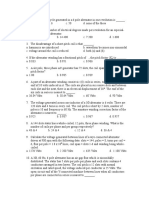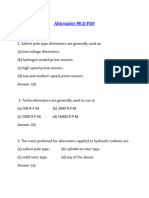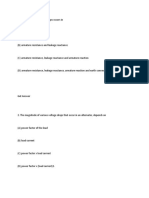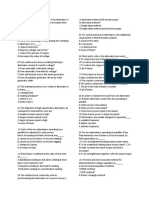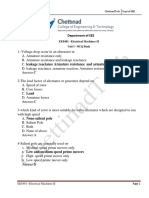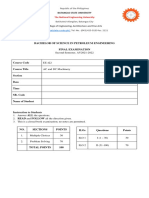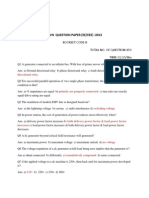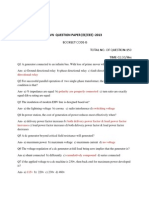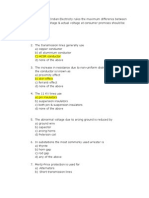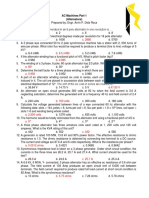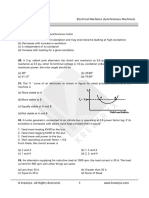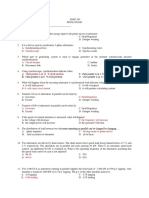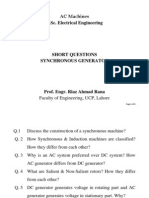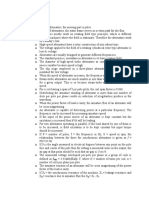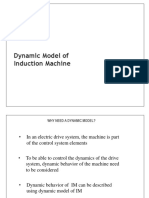0% found this document useful (0 votes)
270 views7 pagesActivity 1 Synchronous Generator
The document contains a set of 42 multiple choice questions about synchronous generators/alternators. Some key topics covered include:
- The use of hydrogen in large alternators
- Methods for synchronizing and balancing load between alternators
- Factors that influence alternator frequency, efficiency, and power output
- Requirements for parallel operation of alternators
- Effects of changing excitation and load on alternator performance
- Armature reaction and its influence on various alternator characteristics
Uploaded by
Reinz 0429Copyright
© © All Rights Reserved
We take content rights seriously. If you suspect this is your content, claim it here.
Available Formats
Download as DOCX, PDF, TXT or read online on Scribd
0% found this document useful (0 votes)
270 views7 pagesActivity 1 Synchronous Generator
The document contains a set of 42 multiple choice questions about synchronous generators/alternators. Some key topics covered include:
- The use of hydrogen in large alternators
- Methods for synchronizing and balancing load between alternators
- Factors that influence alternator frequency, efficiency, and power output
- Requirements for parallel operation of alternators
- Effects of changing excitation and load on alternator performance
- Armature reaction and its influence on various alternator characteristics
Uploaded by
Reinz 0429Copyright
© © All Rights Reserved
We take content rights seriously. If you suspect this is your content, claim it here.
Available Formats
Download as DOCX, PDF, TXT or read online on Scribd
/ 7



